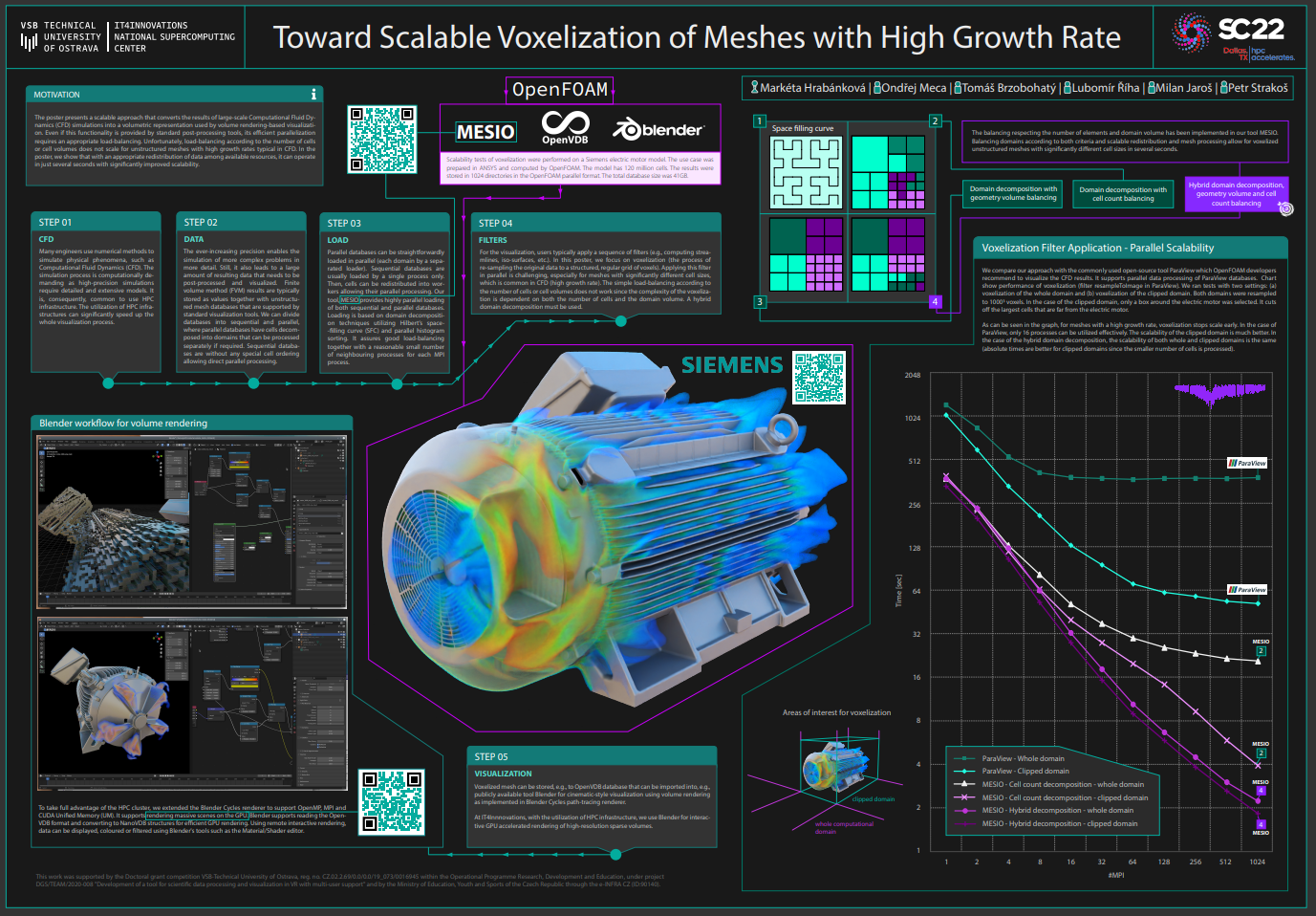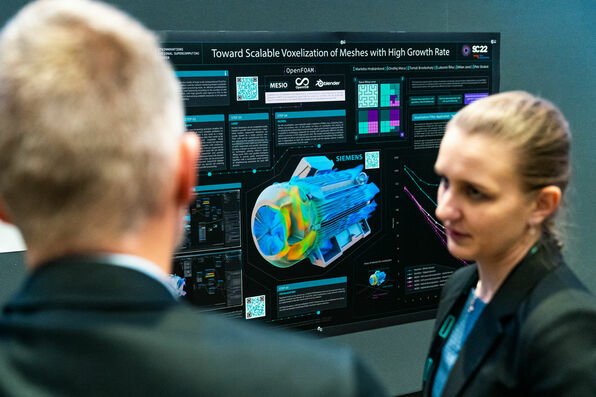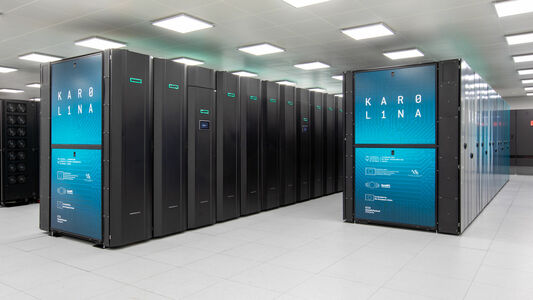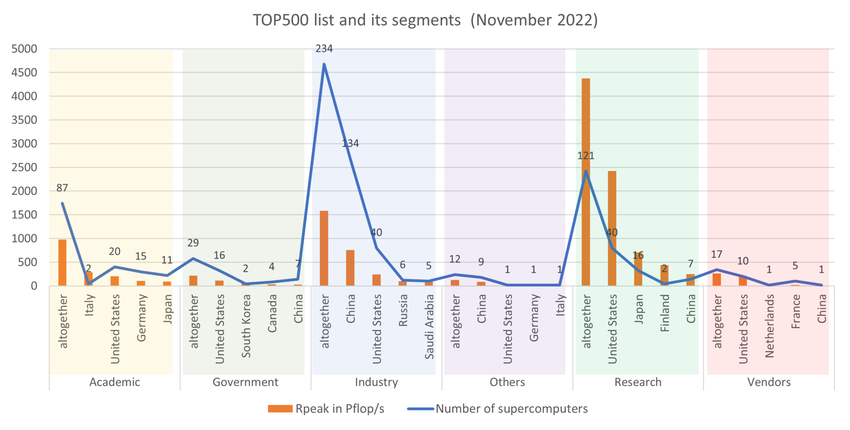Markéta Hrabánková, Ondřej Meca, Tomáš Brzobohatý, Lubomír Říha, Milan Jaroš, and Petr Strakoš impressed on the North American continent and brought the SC22 Best Research Poster Award to the Czech Republic.
Nearly 12,000 HPC professionals from around the world attended the 34th annual International Conference for HPC, Networking, Storage, and Analysis (SC) held from 13th to 18th November in Dallas, Texas, USA, at the Kay Bailey Hutchinson Convention Center. The theme of the conference was "HPC Accelerates". This phrase reflects the rapidly changing world, the new and more complex challenges that not only the world of supercomputing faces, and the work of expert teams looking for solutions.
The conference programme ran for six days and included lectures, workshops, discussion panels, and a poster session. The Best Research Poster Award, which is awarded based on the quality of research and the quality of poster presentation, was won by our colleagues Markéta Hrabánková, Ondřej Meca, Tomáš Brzobohatý, Lubomír Říha, Milan Jaroš, and Petr Strakoš on the topic "Toward Scalable Voxelization of Meshes with High Growth Rate".
We asked our colleagues who presented their research poster at the conference the following:
Markéta and Ondra, can you please share your experience from the SC22 conference?
Markéta Hrabánková: “It was my first time attending such a big conference, and I was impressed by the large number of people involved and how varied the programme is – there were many workshops, lectures, and tutorials as well as various awards and the exhibition section. I was pleasantly surprised that there was a lot of interest in the poster section where we had the opportunity to present our research.”
Ondra Meca: “As this was my first time attending this conference in person, I was surprised by the number of people who attended it. Even though the technical programme was held in several parallel sections, there were dozens of attendees at the lectures. At the poster session, it was also very busy.”
Can you give our readers an idea about the topic of the winning research poster?
Lubomír Říha: “The poster dealt with the visualization of scientific data, specifically the volumetric rendering method. This method is particularly useful for visualizing the results of CFD simulations, where it allows a simple display of, for example, the velocity field or vortices within the volume being analyzed. The disadvantage of volumetric rendering is its time-consuming nature. It takes hours to process a timed task using this technique because commonly used tools cannot efficiently use the available computational resources. By creating an algorithm that can redistribute the work appropriately, we have reduced the processing time to tens of seconds.”
Our algorithm consists of two steps. First, we perform voxelization, i.e., converting the simulation results from an unstructured grid to a regular grid. We then load the voxelized data in Blender, where we can change visualization parameters in real time such as colour settings, scale, transparency, and data filtering. This process allows almost instant visualization of the currently calculated results and, thanks to the connection with Blender, the creation of high-quality and visually attractive outputs for presentation to industrial partners.”
Lubomír, after four years, in Dallas you and your team have again won the Best Research Poster Award. Were there many noticeable differences between this year's conference, especially the poster section, compared to SC18?
Lubomír Říha: “The main difference at this year's conference was a special section of lectures dedicated to the nominees for the best posters. Here we got another opportunity to shine in front of the committee. And I think that we were able to take advantage of this chance, especially thanks to the perfect presentation full of vivid visualizations prepared by Tomáš Brzobohatý. This was confirmed after the awards ceremony by the organizer of the poster section, who is herself a member of the committee. The quality of the presentation greatly aided the smoothness of the lecture.
The poster section was similar to the one held four years ago, but we presented the research with other team members this year. While Markéta answered most of the questions from the conference participants, Ondra was interviewed by representatives of the evaluation committee.
Since we won the Best Poster Award in Dallas in 2018 and again this year, we can only hope the conference will be held in this city again soon. The joy of the award itself is further enhanced by the fact that "Everything is bigger in Texas!" as Texans themselves like to say."
The exhibition is a very popular and well-attended part of the conference, where 361 exhibitors from hardware manufacturers, universities, and research organisations from all around the globe presented this year. IT4Innovations also participated in the exhibition and presented international projects that we are involved in.
At the conference, the updated TOP500 list of the most powerful supercomputers and the updated Green500 list of the most energy-efficient supercomputers were announced. Our Karolina (its accelerated part using Nvidia graphics chips) is still in the top 100 of the TOP500 list, and is ranked 20th in the Green500 list.
The TOP500 list has been being announced for 30 years, and it lists the 500 most powerful supercomputers in the world. The TOP500 list was created in 1993 and has become a significant source of information for analysing trends in HPC. The list is traditionally published twice a year, just in time for the SC conference on US soil and the ISC conference in Europe.
The 60th anniversary of the TOP500 list has just been published at the SC22 conference. The aggregate theoretical peak performance of this November's list is 7,541 PFlop/s. There are 41 brand-new systems on the list, with 17 operating in Europe.
The American Frontier still occupies first place being the fastest computing system in the world, with second place belonging to the Japanese Fugaku, and third place to the Finnish LUMI, which is also used for computations by Czech scientists thanks to the involvement of IT4Innovations in the LUMI consortium. Half a year has not changed the top three of the TOP500 list.
However, fourth place in the TOP500 list has been taken by the brand-new Leonardo system installed at the Italian supercomputing centre for scientific research CINECA, which is co-funded by the EuroHPC JU, much like Karolina at IT4Innovations.
Overall, China dominated the ranking with a number of systems (162) with an aggregate theoretical peak performance of 1132 PFlop/s. The United States is close behind with 127 systems, but with almost three times the computational power of the Chinese (3216 PFlop/s). Among European countries, Germany (34 systems with 331 PFlop/s), France (24 systems with 251 PFlop/s), and the UK (15 systems with 92 PFlop/s) have the most supercomputing systems.
The TOP500 list also provides information about which fields each submitted supercomputer serves most. These includes academia, government, industry, research, vendors, and others (such as telecoms operators and the banking sector). The current list shows that research (58%) and industry (21%) still account for the largest share of the theoretical peak performance of the world's supercomputers. The majority of supercomputers are dedicated to industrial use (234) and research (121).
The power of the computing systems operated by IT4Innovations (Karolina, Barbora, and DGX-2), which fall within the academic sector, has been available to the Czech scientific community and industrial enterprises continuously since 2013, when the Anselm supercomputer was put into operation. The demand for computational resources is growing year by year. Each new grant competition announced confirms that the scientific community in the Czech Republic relies on powerful supercomputers, building its scientific work on them.


.jpg)

